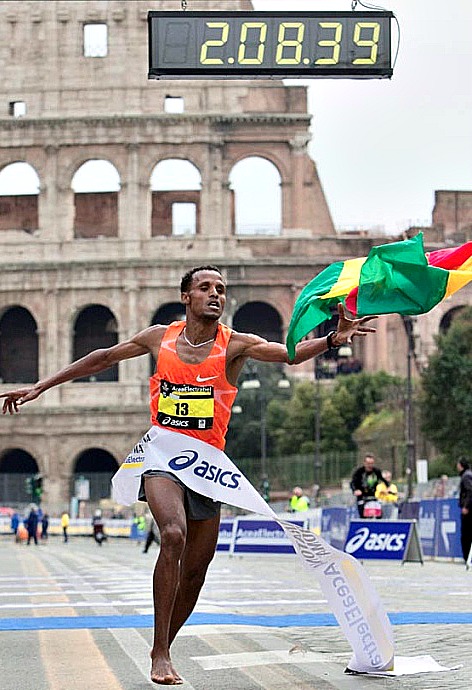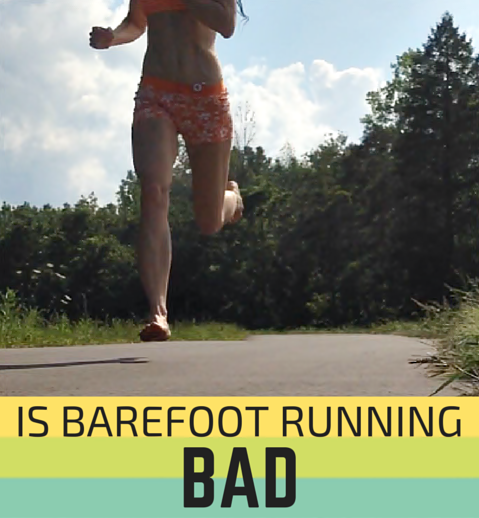Contrary to lay perceptions, humans are born to run, and to do so barefoot as humans ran barefoot for millions of years without injury, and guess what, modern humans inherited the barefoot running trait, we just don’t use it. But unfortunately, many runners continue to question is running barefoot bad ?
Is Running Barefoot Bad
The running shoe industry has conditioned runners to believe that running hurts and that running barefoot is absurd because it will cause even more pain. Yet, according to Robbins and Gouw (1996) running-related injuries are rare in barefoot populations.

Our belief that barefoot running is harmful is actually mind over matter. According to Dr. Tori Rodriguez, a psychotherapist based in Atlanta, evidence is mounting that believing an activity will trigger pain, actually induces real physical symptoms during the activity. In the case of barefoot running, this means that the preconceived negative beliefs about barefoot running results in adverse responses during the activity.
In other words, because we think that running shoes is vital for comfort and protection, we expect that running without them is painful.
- Leupoldt et al. found that an individual’s perception of symptoms might be based on learned associations more than the actual state of their physical health.
- These associations arise through negative messages such as ‘running barefoot is dangerous’ which is enough to elicit a stress response that causes physical symptoms even if the activity, running barefoot, is safe… which it is.
So, expecting that barefoot running hurts will surely increase your pain perception even though less impact occurs at touchdown compared to running in standard running shoes (Robbins and Gouw 1996).
Moreover, Nigg et al. revealed that traditional running shoes increased the risk of injury because runners landed with greater impact, whereas habitually barefoot runners ran with impact that was no higher than shod runners. This is why there is no need to overreact to experiences that are harmless, such as running barefoot.
The Take Home Message
The over-perception of repeatedly presented messages by footwear manufacturers stating that the lower extremity is inherently weak and that running in general is bad is why many runners are dead-against running barefoot.
However, Robbins and Guow famously argued that the fact that running related-injuries in habitually barefoot runners are rare, suggests the opposite: that the lower extremity is inherently durable and made susceptible to injury by wearing running shoes.
Hopefully, this knowledge will prompt the desire for shod-runners who struggle with injury to give barefoot running a shot and with an open mind so that they have more control over how they are affected under barefoot conditions.
Also check out how barefoot running is better than running in shoes.
More From Run Forefoot:
Runners Knee Prevention – Does forefoot running protect the knees better than heel strike running?
Proper Running Shoes – Running shoes I think are best when it comes to forefoot running.
Advice From Alberto Salazar – Find out what Al Sal thinks about how forefoot running impacts performance.
Plantar Fasciitis – Learn what is best for running related plantar fasciitis.
References:
Leupoldt et al. Negative emotional stimulation decreases respiratory sensory gating in healthy humans. Respir Physhiol Neurobiol, 2014; 204:50-7.
Nigg et al. Factors influencing kinetic and kinematic variables in running. In: Biomechanics of Running Shoes. B.M. Nigg. (Ed.). Champaign, IL: Human Kinetic Publishers, 1986, pp. 139-159.
Robbins SE and Gouw GJ. Athletic footwear: unsafe due to perceptual illusions. Med Sci Sports Exerc, 1991; 23(2):217-224.
Rodrigues, T. Psyschosomatic asthma attacks: beliefs and expectations can trigger real symptoms in asthma patients. Scientific American MIND, Mar/Arp 2015, pp.14.
Bretta Riches
BSc Neurobiology; MSc Biomechanics candidate, ultra minimalist runner & founder of RunForefoot. I was a heel striker, always injured. I was inspired by the great Tirunesh Dibaba to try forefoot running. Now, I'm injury free. This is why I launched Run Forefoot, to advocate the health & performance benefits of forefoot running and to raise awareness on the dangers of heel striking, because the world needs to know.
Latest posts by Bretta Riches (see all)
- Are Minimalist Shoes Good for Seniors? YES! - 14/04/2024
- BIG Deals On Running Gear And More! - 09/04/2024
- Why Are My Feet Tired After Running? - 04/04/2024


I agree ! I pracrice a lot of barefoot hiking and most people tell me: “that is not painful ?”. “No” I say, “it is only a sensation, and I feel more secure step by step”.
And I Walk faster !